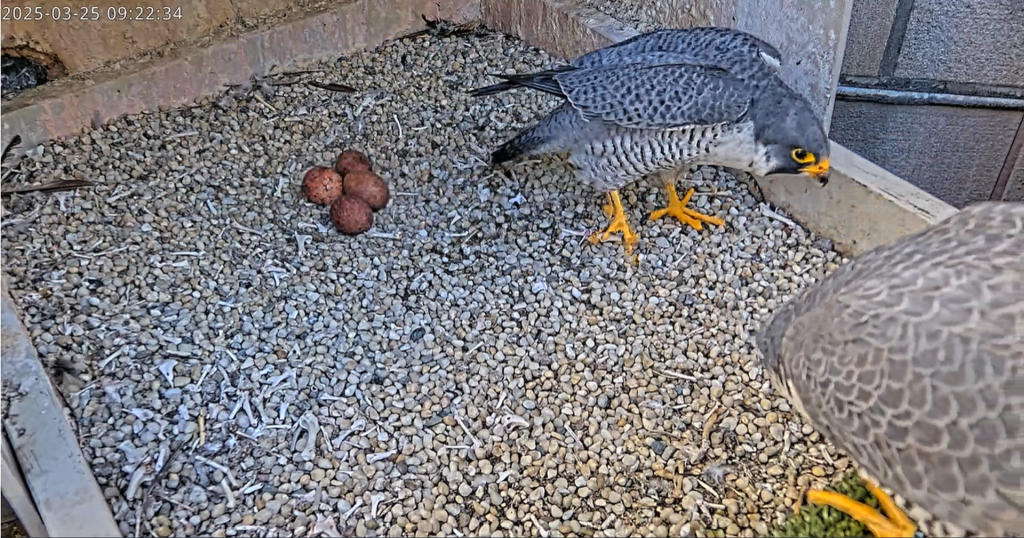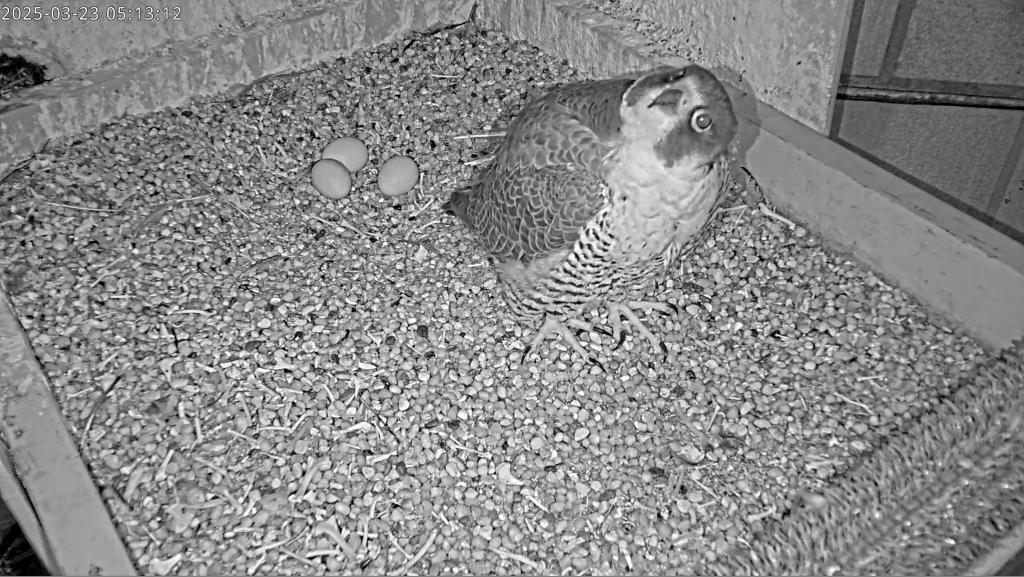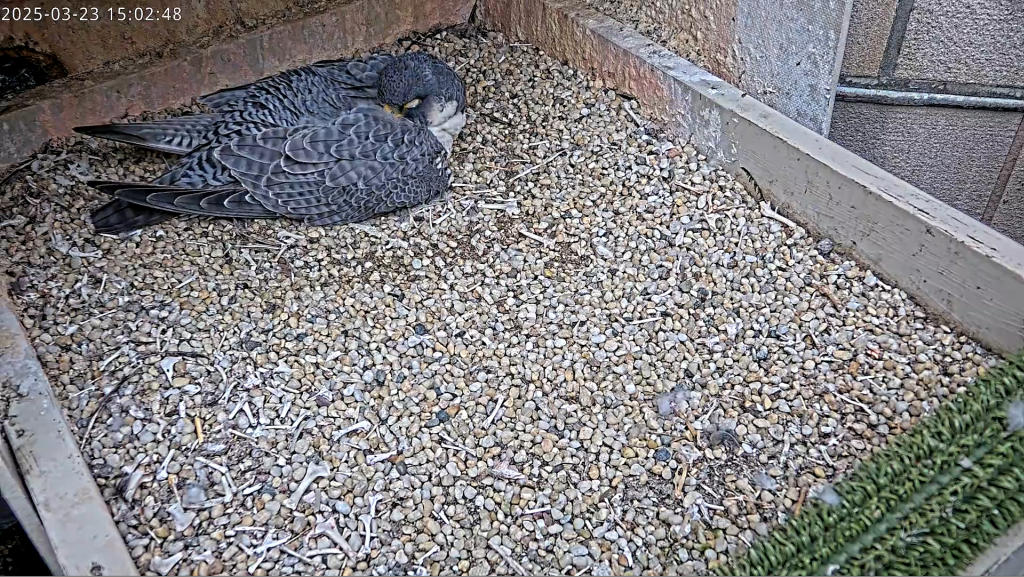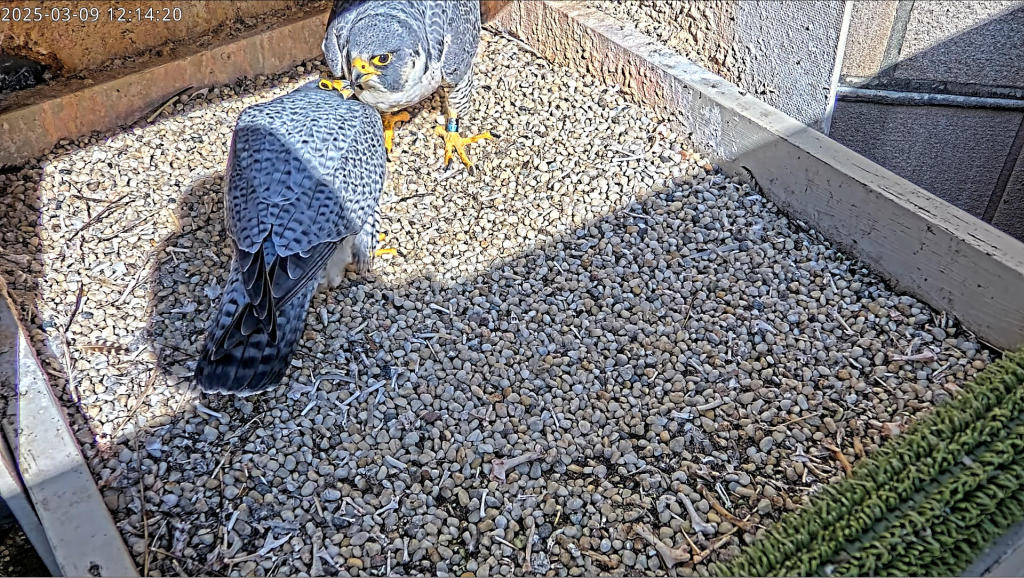
26 March 2025
When peregrines are incubating eggs there is rarely any action on the falconcam and it’s always brief, so chances are most of us weren’t watching when Carla and Ecco did this nest exchange yesterday morning. I missed it too, so here it is.
I’ve chosen to highlight this video, not because anything is unusual, but because it’s so nice to watch something other than a sleeping bird.
In fact the segment starts with Ecco sleeping, but he hears something I can’t hear (probably Carla) and raises his head to look around. We know she’s nearby when she wails.
What does she mean? From the Peregrine FAQs: Wailing means “I want something to change.” The wail sounds awful but does not necessarily mean bad things are happening. It really means “Things are not changing fast enough for my liking.” Read more about this call and others at Peregrine Vocalizations and What They Mean.
We can guess what Carla means in this context by watching Ecco. He knows she wants to trade places with him but won’t get up until she’s close by and ready to cover the eggs.
Carla comes closer and makes soft noises. Ecco leaves; Carla settles down to incubate.
Watch the Pitt peregrines on the National Aviary falconcam at the Cathedral of Learning. You might get lucky and see something interesting.







































